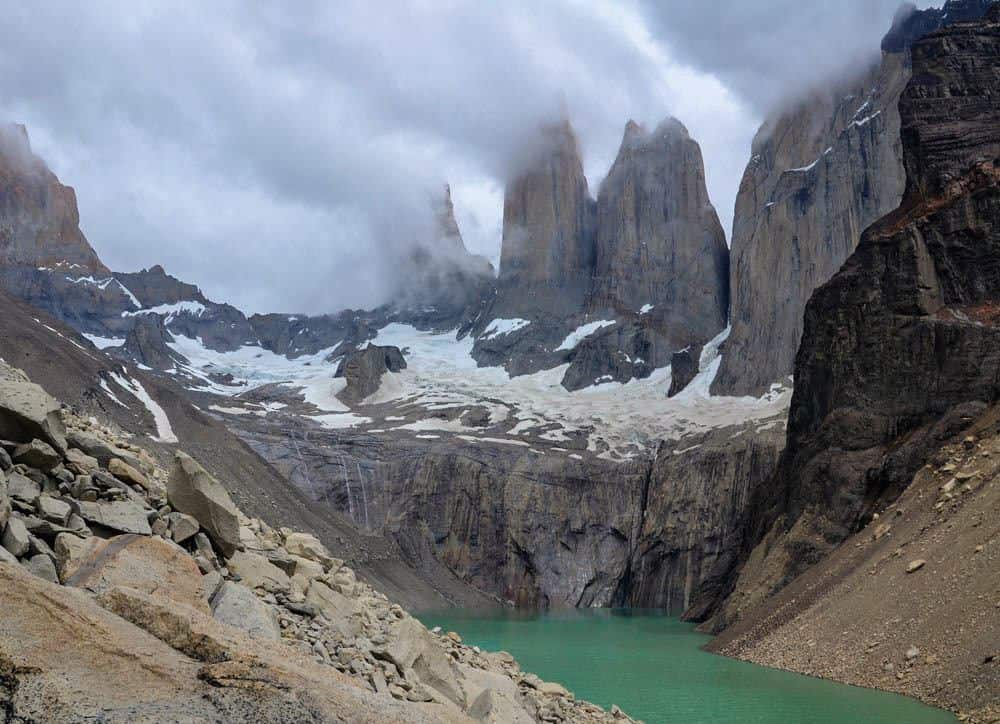[ad_1]
Hiking in Patagonia is breathtakingly beautiful and exciting! This vast, wild region at the tip of South America is a place like no other, and once you see it you’ll understand why. Massive glaciers, jagged granite peaks, azure lakes, roaring waterfalls, and sublime flower fields. Tall mountain peaks and huge swatches of scrubland, dotted with roaming guanacos, lamas and ñandús.
There are not many places in the world where you will fill a deeper connection with nature and witness its tremendous power. There is a reason why hikers from all around the world consider hiking in Patagonia an experience of a lifetime. But the land of massive glaciers and azure lake is as wild as it is beautiful. Therefore, in order to have a great time here, there are a few things that you should know BEFORE planning your hiking trip to Patagonia.
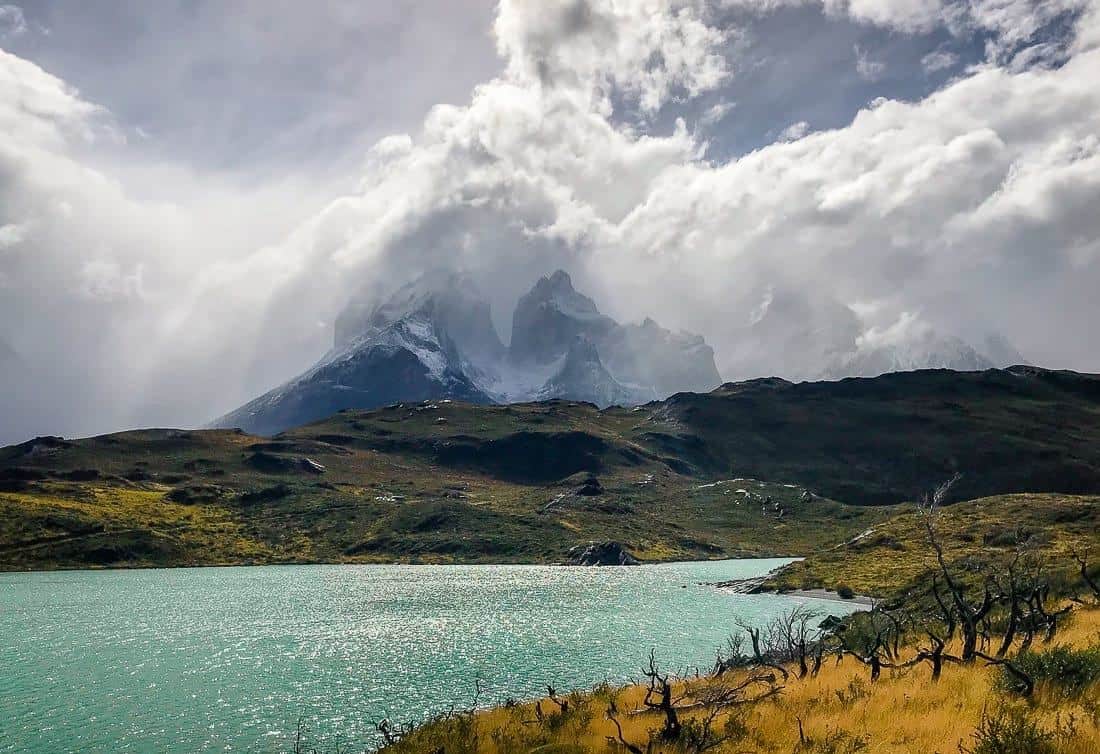
Where to Hike in Patagonia
Patagonia straddles two countries, divided by the Andes Mountains: Chile and Argentina. The Chilean side of Patagonia brags about the famous Torres del Paine National Park, while the Argentinean side boasts the stunning Mount Fitz Roy and Perito Moreno Glacier.
Hiking the Chillian Patagonia
Some of the best hikes in Patagonia are in Chille’s Torres del Paine National Park, which is acknowledged as one the most spectacular places to see in South America, home to fantastic trails and treks, like the epic Torres del Paine W Trek.
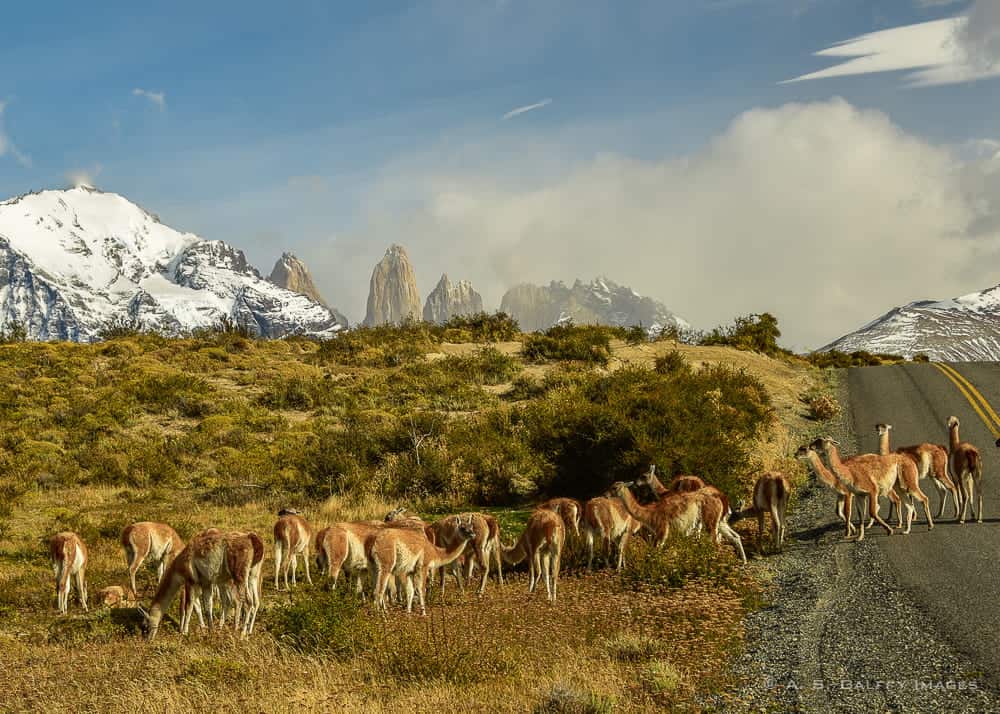
Hiking the Argentinean Patagonia
But Argentinean Patagonia is also home to unbelievably beautiful trails and tracks, like the hike to Laguna de Los Tres and Mount Fitz Roy. There are several world famous treks that start in El Chalten. Some of these hikes are quite easy and can be attempted even by families with small children. Others are longer and more difficult and present a challenge even for the more seasoned hikers.
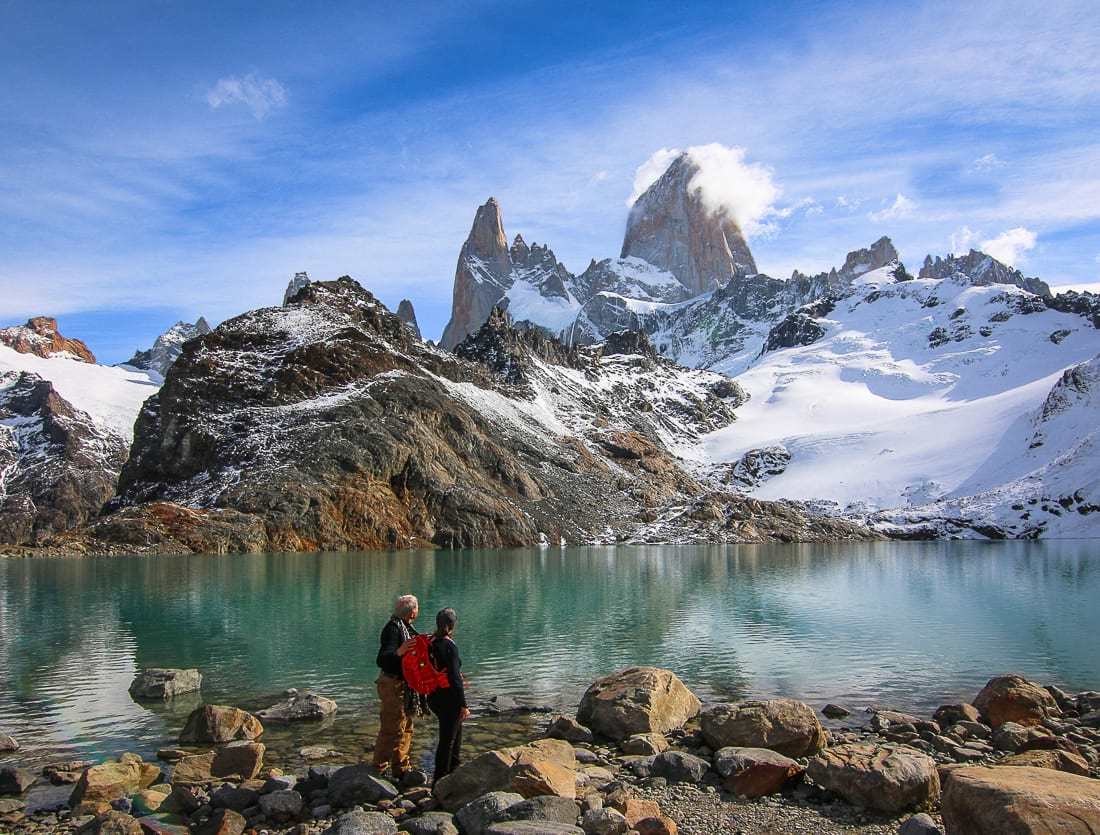
Best Time to Hike in Patagonia
Climate in Patagonia is pretty strange. The weather may go from one extreme to the other in less than a couple of hours. You can pretty much count on very strong winds, rain, mud, and sometimes snow at any time of year. Deciding what would be the best time for you depends on your preferences, expectations and budget.
January 1, 2019
SPRING
The weather is not as stable as in summer, but it’s still nice and the park is not yet full. This is one of the two shoulder seasons when you may get better prices and still have a pretty good chance for good weather.
January 1, 2019
January 1, 2019
SUMMER
The best tie for hiking in Patagonia. Warmer weather and less less rain, but very strong winds. Temperatures are in the mid 50s F to low 60s F. Summer the busiest season of the year and most places in Patagonia are full to capacity.
January 1, 2019
January 1, 2019
FALL
Temperatures are cooler than in summer, but there is generally less wind. The weather is still great for hiking. You may experience more rain and possibly snow. Best time for hiking because the great fall colors. Less crowds and lower prices.
January 1, 2019
January 1, 2019
WINTER
The weather is cold and very unstable. Trails are closed because of the harsh conditions. Refugios and campgrounds are closed and so are most hotels in Torres del Paine and El Chalten. Great time for seeing the Southern Lights.
January 1, 2019
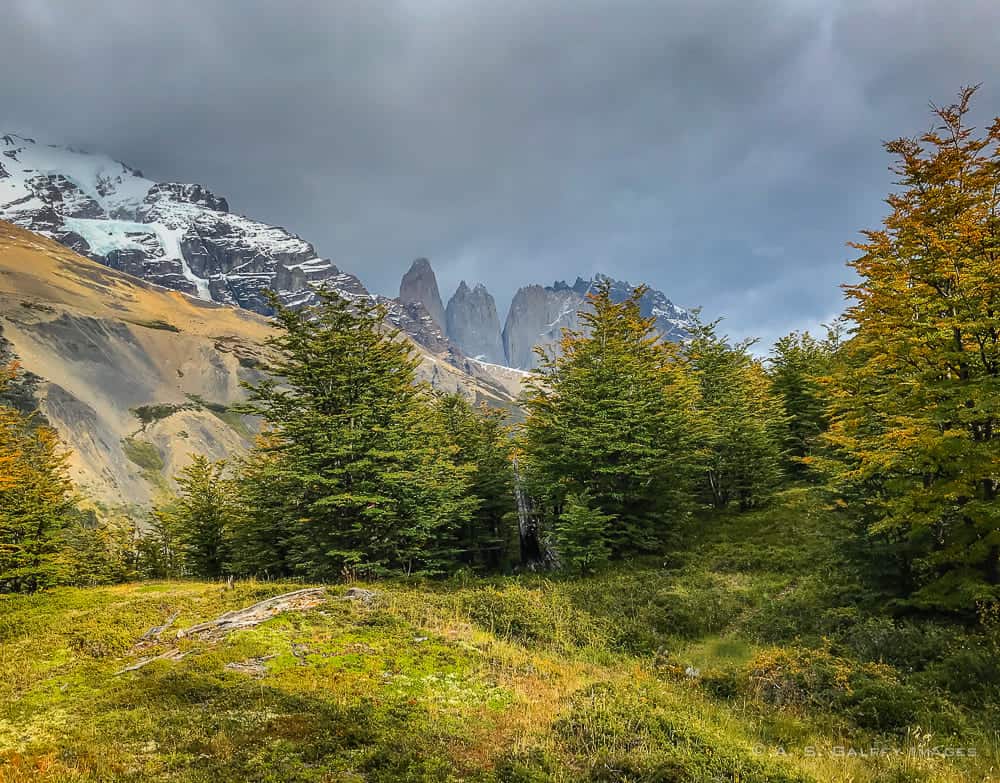
Multi-day Treks vs. Day Hikes in Patagonia
Trekking in Patagonia requires athleticism, endurance and a spirit of adventure. Doing one of the circuits in Torres del Paine can take anywhere from 4 to 8 days and is physically very challenging. You hike a lot of miles each day (mostly uphill) on very rocky trails.
At night you sleep in a tent that is exposed to the elements. So whatever weather is out there you will feel it all: wind, rain, snow or sun. Leave alone the horrible food, the bed bugs, and the horrific sewage odor in campsites and refugios.
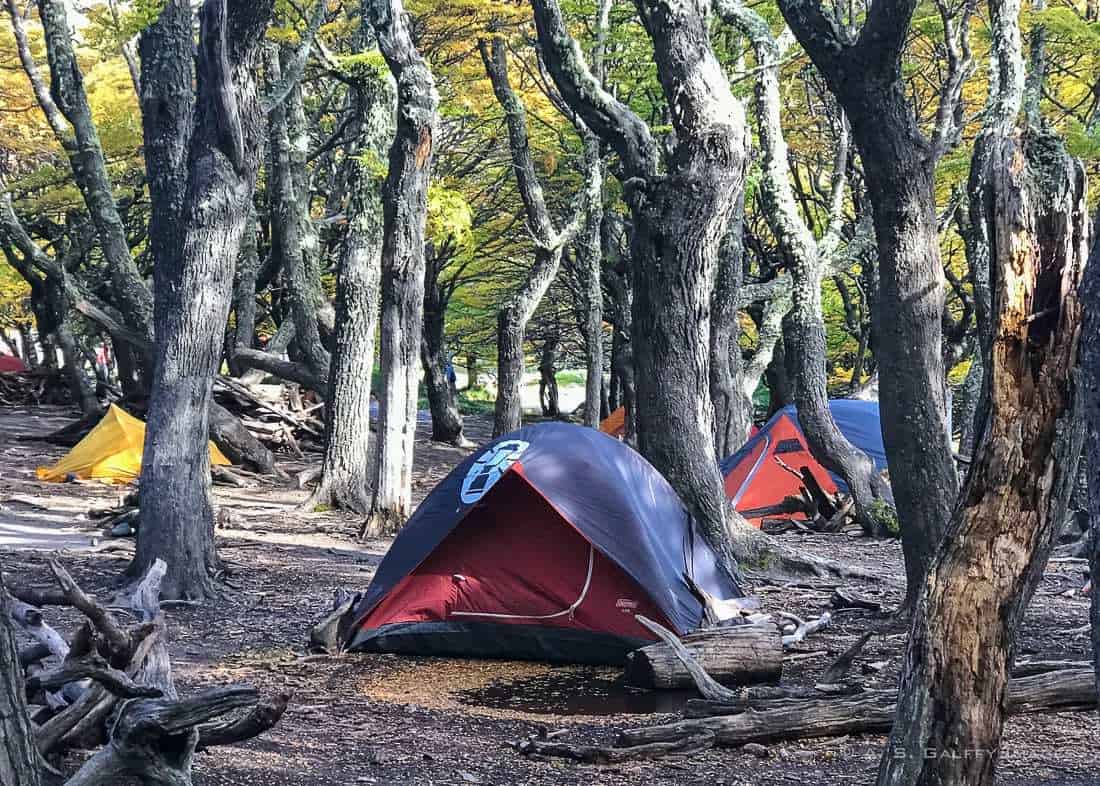
On the other hand, day hikes can be just as beautiful and rewarding. Patagonia is a maze of hiking trails varying from easy, to moderate and more difficult.
If you have no interest in carrying a huge backpack and setting up a tent in the Patagonian wind, you have the option of staying in a nice hotel room and doing day trips. I just need to mention however that this option is more costly.
How Difficult Are the Hikes in Patagonia?
Trekking or hiking in Patagonia is no walk in the park. Especially if you want to do one of the circuits in Torres del Paine. It’s not the technical difficulty of the hike or the altitude that makes it seem strenuous. It’s the length of the trails, the moodiness of the Patagonian weather, and the weight of your rucksack that will drain your strength.
That doesn’t mean that hiking in Patagonia is only for the pros or the extreme adventure seekers. In fact, thousands entry level backpackers and trackers hike every year in Chilean and Argentinian Patagonia. But it certainly helps to have some hiking experience under your belt before you venture here.
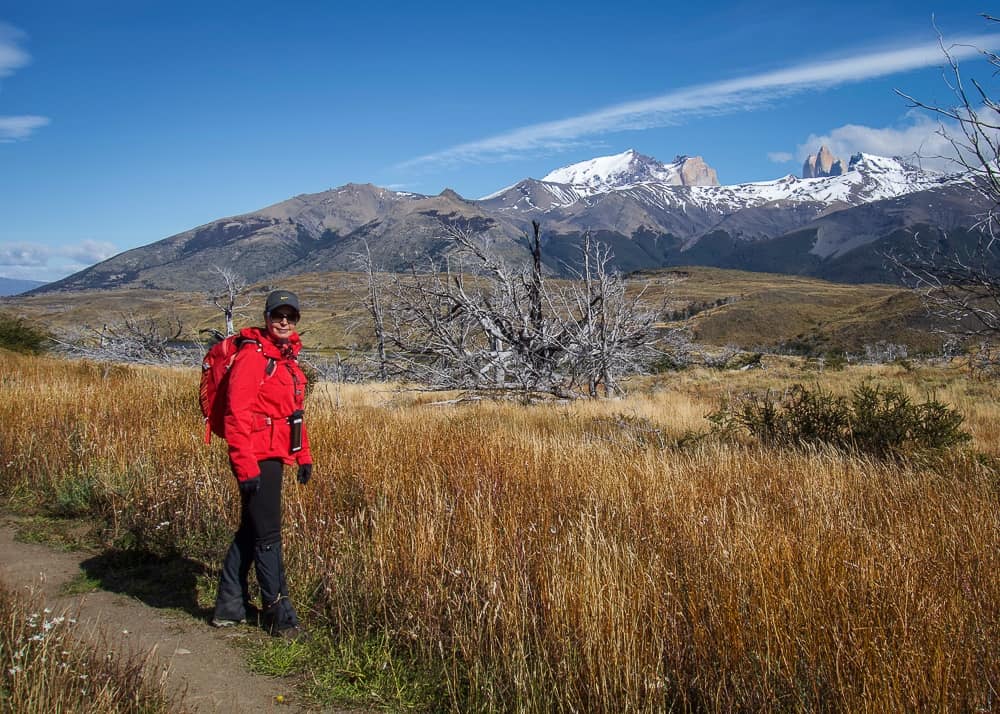
Tips for Hiking in Patagonia
Hiking in Patagonia is doable even for people with an average level of fitness. Depending on the trails you choose, you may need more or less experience. We had a more difficult time hiking the Kalalau Trail, in Kauai, that hiking most of the trails in Patagonia. Trails in Patagonia vary from easy to moderate and more difficult.
You can choose from guided to self-guided tours, but you don’t really need a guide for hiking in Patagonia. Also, unlike the Everest Base Camp where you’ll need a permit for trekking, you won’t need any license or permit for hiking in Patagonia.
Trails are marked and well maintained, so and it’s practically impossible to get lost. In Torres del Paine there are also ranger stations or campgrounds every few hiking hours.
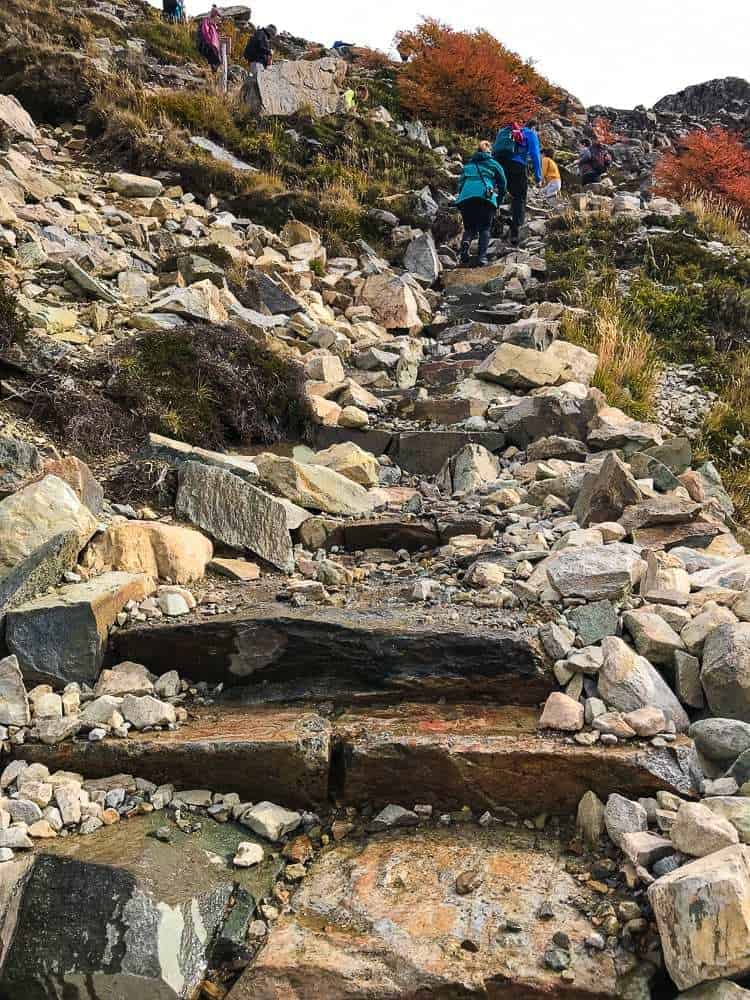
One thing to keep in mind when hiking in Patagonia is the weather. While it’s true that Patagonian weather may change in the blink of an eye, there are still good short term predictions that may help you decide whether to start on an easier or more difficult hike.
Always dress in layers, no matter how the weather looks like. You will constantly be taking off and putting on clothes. I promise you that!
Carry a light backpack if you plan to do day hikes. Some tracks may be quite challenging and the weight of your backpack may drain your strength.
There is plenty of clean water all around in Patagonia, so you can fill your bottle from any stream. Just make sure you bring a refillable bottle with you on the trek.
The bottom line
There is no set way to hiking in Patagonia. Some choose the rough and spartan trekking experience of the circuits and have no problem of sleeping in tents or Refugios. Others, like me, prefer to do day trips and sleep in the comfort of a hotel room at night.
Each route is unique and beautiful, which makes hiking in Patagonia a great experience for everyone attempting it. And this couldn’t be more obvious then when you see the wide diversity of tourists in the region.
READ NEXT: Patagonia packing guide for lots of useful information on what to pack for your trip to Patagonia
Did you find this information useful? Pin it to help other travelers to Patagonia
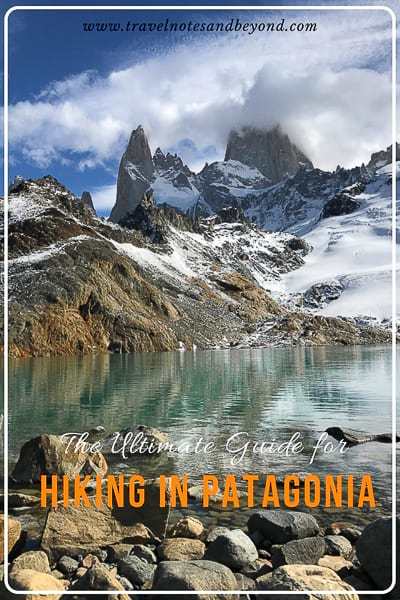
[ad_2]
